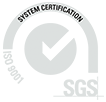Back in the 1980s, FPT pioneered new technology for recycling old automobiles and large scale appliances with its massive fragmentizer operations. The “auto shredder” capabilities allowed an entire vehicle to be rapidly “disassembled” and separated into its metallurgical components in 30 seconds.
However, that was decades ago. The technology has continued to evolve – and, by design, so has FPT. The company is known throughout the industry for actively pursuing innovation and developing promising technology.
In recent years, the industry leaders at FPT have identified a vast new resource of unclaimed metals in the nation’s landfills. Small pieces of nonferrous metal – primarily aluminum, copper and stainless steel – were tossed away because existing equipment wasn’t capable of extracting the small metallics from the nonmetal waste stream exiting the auto shredder.
Thus, the concept and design for the state-of-the-art FPT’s Nonferrous Recovery Plant was born. Located at the north end of the John Kronk Yard, the plant is familiarly known as the “St. Stephens Operation,” referencing the original site’s street address.
As manager of the operation since 2008, Bryan Nakonezny has gained a reputation for his intensity and innate tendency to “stretch the envelope” of technology. Since joining the firm five years ago as a licensed electrician, Nakonezny has distinguished himself as a self-starter. John Kronk Plant Manager Mike Benacquisto notes that Nakonezny “deserves every commendation for going the extra mile to make this operation so successful.”
Built in two phases, the St. Stephens Operation incorporates metals recovery technology from Germany, Italy and FPT’s own Engineering & Fabrication Division. The sophisticated, modern equipment utilizes Eddy Current Separation that excites and induces electro-magnetic inductive separation of aluminum, and employs Selective Inductive Sorting that targets copper wire and stainless using computer-based, precisely controlled dynamic airjet separation of individual pieces.
Certainly not your grandfather’s scrap yard.
The bottom line for both industrialists and environmentalists: The new St. Stephens Operation receives the streams of nonmetallics and fines from the Pontiac, John Kronk, Strong and Cleveland shredding plants that had previously gone to landfills. These waste streams are instead converted into valuable raw materials for metal smelters to produce the many new metal products the world’s economy demands.

